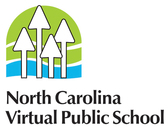SEPTEMBER 2017
|

|

|
|
Improvement/Challenges
Highlight State Accountability Release
Graduation rate sets record for 12th consecutive year
 In the fourth year of the state’s A-F grading system, the
percentage of A or B schools (35.8 percent) continued to climb and the
percentage of D and F schools (22.6 percent) fell compared to the 2015-16
school year, according to school accountability data released
Thursday to the State Board of Education.
Growth data for the 2,531 schools rated showed little change
from the previous year, with the percentage of schools meeting or exceeding
growth targets changing from 73.6 percent in 2015-16 to 73.7 percent in
2016-17. Elementary schools were more likely to meet growth than middle or high
schools; 80.3 percent of elementary schools met or exceeded growth. Elementary
and middle schools’ performance grades are based on test scores alone, while
high school grades are based on test results, graduation rates, and indicators
of students’ readiness for college or a career.
In addition, the state’s four-year
high school cohort graduation rate continued its upward trend, moving to 86.5
percent from the 85.9 percent figure from the 2015-16 school year. North
Carolina’s public schools have set a record graduation rate for a 12th
consecutive year.
Full details,
including state, district and school level results are available online.
|
Schools Under
Consideration for the Innovative School District Announced
State Board to select two schools by December
 The 48 public schools that qualify
for consideration for the North Carolina Innovative School District (NCISD),
the state’s new intervention model for low-performing schools, were announced
at Thursday’s State Board of Education meeting.
Schools on the qualifying list had a performance score in
the lowest 5 percent of all schools in the prior year; offer all or part of
grades K-5; did not exceed growth in at least one of the prior three school
years and did not meet growth in at least one of the prior three school years;
and did not adopt one of the established reform models for the immediate prior
year.
In the coming weeks, schools under consideration for the
NCISD will undergo additional evaluation activities including NCISD
superintendent meetings with parents and families, local communities, the local
school principal, the local school board and the local county commissioners. As
part of the final selection process, the NCISD superintendent will complete an
evaluation based on school outcomes and available information, which will
include feedback from these local meetings.
The final list of schools for NCISD consideration will be
presented to the State Board of Education at its October Board meeting. The
board has until December to select two schools to begin participating in the
2018-19 school year.
Additional information on the NCISD is available online.
|
Upon approval, plan takes effect this school year
 The State Board of Education on Thursday approved the state’s
final plan under the federal Every
Student Succeeds Act, the reauthorization of the 1965 Elementary and Secondary Education Act and replacement for the No Child Left Behind Act of 2001.
The plan is to be in effect for the 2017-18 school year,
though it must still be approved by the U.S. Department of Education, which has
up to 120 days to complete it’s review. The federal deadline for submitting the
final plan is Sept. 18.
Among other elements, the plan establishes long-term,
10-year goals for student performance using current end-of-grade and
end-of-course exams. For example, the plan sets as a goal for aggregate reading
performance of third through eighth graders that by 2027, 65.8 percent of
students will be achieving at the state’s College-and-Career-Ready standard
(levels 4 and 5) for a 20 percentage-point gain from the 2016 baseline of 45.8
percent. The goal for math performance for third through eighth graders,
combined, is 74.1 percent at the College-and-Career-Ready level, up from a
baseline of 47 percent
The plan also includes goals for closing achievement gaps,
among specific minority groups, English Learners and students with
disabilities.
The 10-year goal for the state’s four-year cohort graduation
rate is 95 percent, up from the 2016 baseline of 85.9 percent.
In addition, a key component of the plan is a theory of
action for the state’s efforts to improve the public schools and student
outcomes. State Superintendent Mark Johnson cited the plan’s theory of action
as an important driver to achieve those ends.
|
State Board to Ask
Legislature for Technical Corrections to Principal Pay Boost
Unintended consequences result from newly adopted rules
 By adopting a plan that ties salaries to school size and
student growth as measured by the state’s accountability system, the General
Assembly moved away from a highly convoluted pay system. But after hearing
about potentially serious concerns about the transition, the State Board of
Education voted to direct Superintendent Mark Johnson and DPI staff to provide
needed information to the General Assembly to correct unintended consequences
associated with the newly adopted rules for setting pay and awarding bonuses for
school administrators.
The General Assembly earlier this year addressed concerns
about pay for North Carolina principals, whose salaries were among the lowest
in the nation last year, appropriating an additional $35.4 million increase to principal and assistant principal compensation in 2017-18 and a cumulative,
two-year increase of $40.6 million by 2018-2019.
According to the N.C. Association of School Administrators,
the new plan and increased funding will move average principal pay from just
under $64,000 per year to more than $71,000 per year, not including the bonus
pay. In a memo to NCASA members after the budget was approved, the group
acknowledged that refinements would still be needed to the new pay structure.
Although all principals are held harmless this year from a pay
decrease, an extensive presentation from School Business Director Alexis
Schauss detailed examples of some principals who could face serious pay cuts
beginning next year if corrections aren’t made.
|
Anniversary symposium set for Oct. 21-22
 The North Carolina Virtual Public School (NCVPS) is turning 10, and staff are celebrating a decade in online teaching and learning by inviting the public school community to its 10-Year Anniversary Symposium on Oct. 21-22.
Come to connect, share and learn about online and digital learning as well as commemorate the past 10 years and the future of learning.
Please visit the 10-Year Anniversary web page to register for the symposium and for information and updates.
|
Camera traps to capture wildlife images
 Do you ever wonder what animals lurk in your own backyard? Now is your chance to discover the secrets of wildlife there and other nearby places by participating in “North Carolina’s Candid Critters,” a free research project of the NC Museum of Natural Sciences, NC Wildlife Resources Commission and NC State University.
Staff are looking for volunteers in ALL 100 counties to help collect mammal photographs by running camera traps. This is a great family activity since animal photos are an engaging way to get children excited about science and the natural world. The photos generated turn into data, allowing students and scientists to map where animals live, and when and where they are most active across the state.
If you live in or near Pender, Moore, Haywood, Craven, or Cleveland counties, you also can volunteer for the Fall Fawn Frenzy – a survey of white-tailed deer in select counties this fall. For Candid Critters and Fall Fawn Frenzy, we provide all the equipment and there are no costs as you can borrow a camera trap from a nearby public library.
For more information and to sign up to participate, visit the North Carolina’s Candid Critters website. If you have any questions, please visit the website or contact Dr. Stephanie Schuttler or 919.707.8088.
|
|
|
|